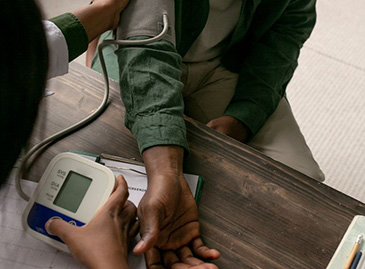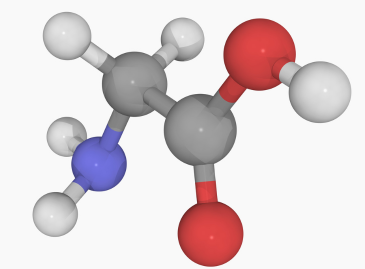Peripheral Artery Disease in Turkey
Peripheral artery disease is common in which narrowed arteries reduce blood flow to the arms or legs. PAD can happen in any blood vessel, but it is more common in the legs than the arms.
We are with you throughout the entire process
You will find some useful information that will help you prepare the necessary organization to prevent all problems and make the necessary arrangements to ensure that everything goes smoothly during your stay in Turkey.
After our with doctor answers all your questions, doctor will explain to you how the operation process will proceed.
You will have a preliminary meeting with the doctor and team we work with before the operation.
Read the document we sent you before coming to Istanbul and be sure to follow the rules.
During the recovery process, our teams will call you, ask about your condition and ask for photos.
Authorized by the Ministry of Health and Tourism in Turkey
What is Peripheral Artery Disease?
Peripheral artery disease is a condition in which insufficient blood can flow to the area fed by the vessel as a result of narrowing and occlusion of the vessels, often due to arteriosclerosis. This disease is most commonly seen in the leg arteries.
However, this disease can also be caught in the carotid artery, arm vessels and internal organ vessels. Although it is generally seen in middle and older ages, it can also be seen in younger age group patients recently. It is approximately 5 times more common in men.
What are the Symptoms of Peripheral Vascular Disease?
Unfortunately, peripheral Vascular Disease may not show any symptoms in its early stages. When symptoms do appear, the first sign is usually intermittent claudication, a medical term for severe pain in the calf when walking a certain distance. This pain can develop more quickly when walking fast, uphill, or climbing stairs, and may require the patient to stop walking due to the discomfort.
As the disease progresses, the patient experiences a gradual decrease in their walking distance. The patient frequently experiences severe pain, especially when walking shorter distances. In later stages of the disease, the pain becomes more severe when the patient is resting, such as lying on their back at night. Along with the pain, they may also experience coldness, chills, discoloration, and numbness in their feet. In the final stages of the disease, the patient may develop wounds and gangrene on their toes, which are referred to as "critical leg ischemia".
What are Peripheral Vascular Disease Risk Factors?
It is similar to general atherosclerosis risk factors. Age, genetic factors, family history and male gender are unchangeable risks, such as smoking, diabetes, high blood pressure, obesity, high bad cholesterol (LDL) and fat levels, inactivity, and irregular living habits.
What is carotid artery disease?
Carotid arteries are arteries located on both sides of the neck. Carotid artery disease, or carotid stenosis, is a severe condition. Blood clots can quickly form in areas where stenosis occurs and become blocked, or the plaque or blood clot there may break off and block another smaller artery in the brain, causing a stroke.
Symptoms of transient ischemic attack or stroke may include Dizziness or unsteadiness, Sudden, severe headache with no known cause, sudden vision problems in one or both eyes, Sudden unilateral weakness or numbness in the face or arms and legs, and difficulty speaking or understanding.
What is peripheral lower extremity vascular disease?
When there is a disease in the leg vessels, leg pain occurs that disappears with rest and increases when tired. This pain can sometimes radiate to the thigh and hip areas.
In addition to these, delayed healing of the leg wound, wound (ulcer) on the leg, and even gangrene may occur. Other symptoms include gradual weakening of the leg muscles, a feeling of coldness and coldness in the legs and feet, colour change in the feet, loss of foot hair, and atrophic changes in nails.
How is peripheral vascular disease diagnosed?
Doppler ultrasonography: provides approximate findings about the status and extent of the disease and the affected vessels. If severe arteriosclerosis is detected, further examinations such as MRI, CT, and peripheral angiography are required.
What are the Treatment Options Available for Peripheral Artery Diseases?
Advances in medicine aim to enhance patients' quality of life. Treatment is planned based on the severity, extent, and vascular anatomy of peripheral vascular disease in the patient.
Treatment can be categorized into three main groups: medical treatment, endovascular procedures (such as balloons and stents), and surgical treatment.
Medical treatment aims to improve existing symptoms and enhance the patient's quality of life and comfort. It involves drug treatment supported by exercises to achieve the best results. The medication may include cholesterol-lowering (statins) and vasodilator drugs, along with aspirin or similar medications to reduce the risk of clots in the veins. In severe cases where drug treatment is inadequate, angioplasty/stent or surgical treatment may be necessary.
Endovascular treatment is an effective process aimed at healing patients without surgical intervention. This procedure carries no risks and has a high success rate.
Surgical treatment aims to solve health problems using commonly used methods. The best decision is made with the patient and their family, considering other health issues and disease severity. It has a high success rate.
What is peripheral angiography?
Using angiography catheters appropriate to the characteristics of the vessel to be imaged, the desired vessel is visualised by administering opaque material through the catheter, accompanied by fluoroscopic imaging. Both diagnoses can be made with this procedure, and it is possible to perform balloon, stent or other methods in cases requiring treatment.
What is peripheral angioplasty (vascular enlargement), and how is it done?
Peripheral angioplasty can be performed on brain vessels, arm and leg vessels, aortic vessels, vessels leading to the lungs, and renal vessels. Narrowed or blocked peripheral arteries are expanded with balloons and stents with high success. It is less risky than vascular surgery, and the surgical option is preserved for use in case of failure.




